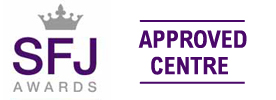The Practice of Recording Surveillance
This manual cannot instruct the reader on physical surveillance methods because the practical element of such teaching outweighs the theoretical element to such a high degree. The completion of a surveillance log is a practical requirement that can be taught through this medium, however.
The reason behind the setting of a standard national format for log keeping is so that everyone who subsequently makes use of the surveillance log is aware of what the contents are, and what they mean.
The surveillance log is, effectively, a group equivalent of an investigator's notebook. Since surveillants (those engaged in surveillance activity) cannot reasonable be expected to be seen completing their own notebooks while so engaged, law and practice allows for the keeping of a log by a log-keeper, whose sole responsibility is the recording of observations by other surveillance team members. The log-keeper is not expected to take part in observation, although this can happen, of course. Ideally, the log keeper remains at a distance from the activity, so to speak, recording what others have seen.
Surveillants whose sightings were recorded in it can refer to the log, like a group notebook. This is supported by case law, as the requirements were set down in R v Sekhon. Those requirements are:
- The notes could be referred to as a means of refreshing the memory of the witness, without the record itself being put before the jury.
- Other parties involved in the case can see the contents of the log so that proper cross-examination can take place.
- The log is, like an investigator's notebook, capable of being used to underpin or undermine any witness's claims in oral evidence, insofar as the log is a contemporaneous record of the events. It is not evidence in and of itself, but can also be used to assist a jury in understanding a complex case.
- Like a notebook, it is for the presiding judge or magistrate to permit its use as an aide memoir.
Like notebooks, the issue and retention of observation logbooks should be closely monitored and stand up to scrutiny. Use of a register is common practice, and that register should record issue and return of logbooks. The content of a log book, like that of a notebook, will initially be placed before a court in a statement or affidavit. The taking of photographs will be recorded as if the film is an exhibit, and it will be exhibited in accordance with the rules used in respect of exhibits. That is, the film is an exhibit, and the photographs that result from its development will become separate exhibits produced by the person processing the film.
Completion of Log Book Entries
- A new logbook will be used in respect of any new surveillance, unlike a notebook that is used to record any and all enquiries by an investigator.
- The opening entry in the logbook will contain a declaration by the log keeper to the effect that they are allocated that task. Their name, and the name of the surveillance operation (if applicable) will be added. A list of the personnel involved in the surveillance will then be added below, by name and not job title or rank. This allows for entries to be made using initials, although this should be avoided if any confusion may arise.
- The time the surveillance commences is then stated, and the log keeper maintains a contemporaneous record of what is passed to him or her, noting the surveillant's details, and what the surveillant saw, in as much detail as circumstances allow.
- If individuals are surveilled who are not known to the surveillants, they may be allocated the 'name' Subject 1, Subject 2, and described for the purpose of the log book. They can later be referred to by that title, and if identified later it will be seen what they did earlier in the surveillance. It may be practice to refer to the target(s) of the surveillance as Subject 1 (etc), and any other unknown persons as Associate 1, Associate 2, and so on. Provided the titles are agreed beforehand this should not cause confusion.
- If the log keeper's responsibilities are passed onto another surveillant, a note to that effect can be made in the log. The log keeper handing over the log writes a note to the effect that the log is being handed to a named individual, and that individual than declares their responsibility as log keeper. Both of these entries are signed.
- Otherwise, normal notebook rules apply (see Chapter 2).
- If contact is not going to be maintained between surveillants and the log keeper, a personal issue logbook can be used instead. Reference to that personal issue logbook can be made in the operational logbook, so that its issue and completion can be noted and, therefore, continuation of the main record can be maintained, and statements seen to make sense at a later date.
- Administrative notes can also be made; for example, the names of surveillants leaving and joining the surveillance will be recorded in the main log.
- When the surveillance is completed, a declaration will be made in the log to that effect.
Post Observation Procedure
- Immediately following the cessation of surveillance, all those involved should attend a debriefing session. This session is also documented in the observation log.
- All persons present are listed, and any absentees are also listed along with the reasons for that absence. 12. Any personal issue logbooks are then handed in to the log keeper, and that fact recorded.
- The purpose of the debriefing session is to identify inaccuracies and errors, and any identified can be amended within the log, and the correction or alteration recorded at the end of the log during the debrief. Both entries will be signed by the individual making the correction, who will be the surveillant whose information was recorded at the outset.
- That is, if Surveillant A passed a message that the log keeper misread or misrecorded, then Surveillant A will cross out the original (wrong) entry, and write an amended entry at the end of the log, signing that as well. (Remember, like a notebook, it is that surveillant's entry, and that surveillant's responsibility regarding its accuracy.)
- Each amendment (at the end of the book) shall be allocated a sequential alphabetical letter. This is for ease of reference.
- During the debrief, additional information can also be recorded in the logbook, but only by the surveillant witnessing the event that is recorded.
- Every surveillant witnessing an event shall initial the recording of that event at its place in the logbook.
- Once the debrief is complete, all surveillants will sign the logbook, and the time of the cessation of the debrief will be noted.
- Any surveillant not present during the debrief will sign the log at the earliest opportunity, and make a declaration as to why they were not present at the debrief.
- The logbook or books will be submitted for secure storage by a senior investigator.
Page: 6
Module: 19




